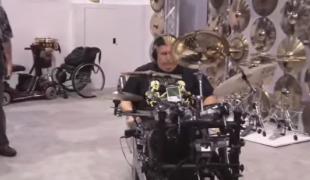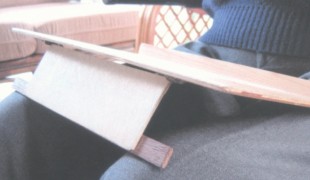- 11641
- 648
- 13
- 9
- 0
- Help Ukraine
About the solution
The Tactile Stave Notation consists of a sheet music built using 3D printing, and helps the readers by slightly elevating the staff and notes printed on it, allowing both visually impaired musicians and sighted people to read the same musical score. This is an alternative to Braille musical notation, because one doesn’t have to know Braille to be able to read the sheet.
"When we rehearsed they talk about, 'Oh there's some hairpin here.' What's a hairpin? A hairpin on my head not score. I didn't know what that is. I don't have hairpin. And they explained it to me. It was shameful for me," she explained.
The pianist started to lose her sight when she was a little kid, and became blind when she was 13 years old. Two years later she got serious about playing the piano. Yeaji went to USA in 2007, having then enrolled at UW-Madison School of Music.
The woman built this system while working on her doctorate UW-Madison School of Music. Kim created different prototypes: One was made out of plastic, another using a 3D printing pen. The she started to research about how to put it on paper, and tried to raise money to produce it.
Adapted from: http://bit.ly/1gVOeNw
https://youtu.be/Pi4Ss0QWadM
这些解决方案不应包括使用药物,化学品或生物制品(包括食品);创伤性设备;冒犯性的,商业或内在危险的内容。该解决方案未经医学验证。请谨慎进行!如果您有任何疑问,请咨询健康专家。
DISCLAIMER: This story was written by someone who is not the author of the solution, therefore please be advised that, although it was written with the utmost respect for the innovation and the innovator, there can be some incorrect statements. If you find any errors please contact the patient Innovation team via info@patient-innovation.com
-
-
260
-
0
-
3012

Man creates device to help blind people learn Braille
COMMUNICATION: Communicating, whether by speaking, listening, or other means
Reading
Blindness
Visual Impairment
Educational/Leisure device (book, toy, game...)
Vision problems
Memory loss
Managing Neurological Disorders
Promoting inclusivity and social integration
Neurology
Ophthalmology
Pediatrics
United States
-
-
-
519
-
0
-
8507

Hybrid Rolling Drum Kit
-
-
-
378
-
0
-
3977

Paraplegic invents device to help reading on the wheelchair
Reading
MOVING IN A WHEELCHAIR: Moving using a wheelchair.
Paralysis
Neuromuscular Disorders
Spinal Cord and Nerve Root Disorders
Amyotrophic Lateral Sclerosis
Cerebral Palsy
Cervical spinal cord injury/Tetraplegia
Educational/Leisure device (book, toy, game...)
Walking Aid (wheelchair/walker/crutches)
Muscle cramps or spasms
Difficulty coordinating movements
Stiffness or rigidity (difficulty moving)
Paralysis of the legs and lower body
Muscle weakness
Difficulty speaking or understanding speech
Promoting self-management
Managing Neurological Disorders
Promoting inclusivity and social integration
General and Family Medicine
Neurology
Belgium
-
 zh
zh